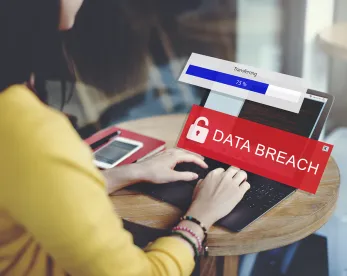Efforts to secure systems and data from a cyberattack often focus on measures such as multifactor authentication (MFA), endpoint monitoring solutions, antivirus protections, and role-based access management controls, and for good reason. But there is a basic principle of data protection that when applied across an organization can significantly reduce the impact of a data incident – the minimum necessary principle. A data breach reported late last year by the Rhode Island Public Transit Authority (RIPTA) highlights the importance of this relatively simple but effective tool.
In December 2021, RIPTA sent notification of a data breach to several thousand individuals who were not RIPTA employees. Reports of the incident prompted inquiries from a state Senator in Rhode Island, Louis P. DiPalma, and union officials who represented the affected individuals. According to Rhode Island’s Department of Administration (DOA), a forensic analysis conducted in connection with the incident indicates the affected files included health plan billing records pertaining to State of Rhode Island employees, not RIPTA employees. The DOA goes on to state that:
[s]tate employee data was incorrectly shared with RIPTA by an external third party who had responsibility for administering the state’s health plan billing.
An investigation is underway to confirm exactly what happened. The content of recent conversations between state officials and union representatives reported in the press indicate that an RIPTA payroll clerk received a file containing state employee health plan data in August 2020, stored it on the employee’s hard drive, where it remained until August 2021, when the cyberattack on RIPTA occurred. It is unclear why the employee received the information, from whom, or whether it was appropriate to maintain it.
Regardless, the “minimum necessary” principle, simply stated, requires that organizations take reasonable steps so that confidential and personal information are only accessed, used, maintained, or disclosed to carry out the applicable business functions. Consider, for example, that retention policies are becoming increasingly important from a compliance perspective, such as with regard to the California Privacy Rights Act of 2020 (CPRA), which amends and supplements the California Consumer Privacy Act (CCPA), the EU General Data Protection Regulation (GDPR), and the Illinois Biometric Information Privacy Act (BIPA). This principle can be applied at multiple points in the operations of the organization, including without limitation:
-
When requesting information. Think about what elements of information the organization collects from customers, students, patients, vendors, employees, and others. Is it more information than is needed to carry out the purpose(s) for the collection? Can portals, forms, etc. be modified to limit the information collected?
-
When receiving information. Employees cannot always control the information they receive from parties outside the organization. But when they do, what steps or guidelines are in place to determine what is needed and what is not needed? For information that is not needed, what is the process for alerting the sender, if necessary, returning the data, and/or removing it from the systems?
-
When using information. Employees carry out many critical business functions that require the use of confidential and personal information. Do they always need all of it? Are there instances where less information can be sufficient for the processing of an important business function.
-
When storing information. The task at hand has been completed and the question becomes what information should be retained. The answer can be a complex web of legally mandated retention requirements, contractual obligations, business needs, and other considerations. But organizations should carefully analyze these issues an establish protocols for employees to follow. Note that under the CPRA, a covered business may not retain a consumer’s personal information for longer than is reasonably necessary for the stated purpose it was collected.
-
When responding to requests or disclosing information. Whether engaging in billing and collection activities, responding to an attorney demand letter, reporting information to the government, administering benefit plans for employees, or any number of other typical business functions, organizations make disclosures of confidential and personal information. Important questions to ask are (i) what data does the requesting party really need, (ii) what classifications of information are actually in the file being disclosed and are there limitations on the disclosure of that information, and (iii) whether the response or disclosure can have the same effect with less data.
In thinking about these questions, there may not be a clear right or wrong answer to whether the information should or should not have been collected, used, stored, or disclosed. However, from a risk management perspective, it is helpful to review business procedures, practices, operations, forms, etc. for ways to minimize exposure to confidential and personal information. Applying the minimum necessary principle can be an effective way of minimizing the organization’s data footprint so that should it experience a security incident, there is the possibility for less data to be compromised.




 />i
/>i

